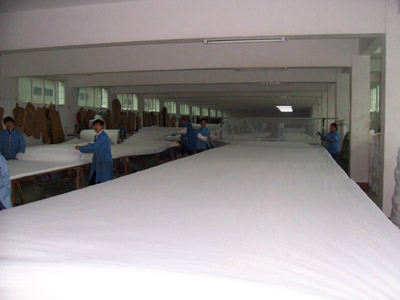`
| |
|
Sunday, July 8th, 2012
| A |
Acceptance Criteria/Test, Automation, A/B Testing, Adaptive Planning, Appreciative inquiry |
| B |
Backlog, Business Value, Burndown, Big Visible Charts, Behavior Driven Development, Bugs, Build Monkey, Big Design Up Front (BDUF) |
| C |
Continuous Integration, Continuous Deployment, Continuous Improvement, Celebration, Capacity Planning, Code Smells, Customer Development, Customer Collaboration, Code Coverage, Cyclomatic Complexity, Cycle Time, Collective Ownership, Cross functional Team, C3 (Complexity, Coverage and Churn), Critical Chain |
| D |
Definition of Done (DoD)/Doneness Criteria, Done Done, Daily Scrum, Deliverables, Dojos, Drum Buffer Rope |
| E |
Epic, Evolutionary Design, Energized Work, Exploratory Testing |
| F |
Flow, Fail-Fast, Feature Teams, Five Whys |
| G |
Grooming (Backlog) Meeting, Gemba |
| H |
Hungover Story |
| I |
Impediment, Iteration, Inspect and Adapt, Informative Workspace, Information radiator, Immunization test, IKIWISI (I’ll Know It When I See It) |
| J |
Just-in-time |
| K |
Kanban, Kaizen, Knowledge Workers |
| L |
Last responsible moment, Lead time, Lean Thinking |
| M |
Minimum Viable Product (MVP), Minimum Marketable Features, Mock Objects, Mistake Proofing, MOSCOW Priority, Mindfulness, Muda |
| N |
Non-functional Requirements, Non-value add |
| O |
Onsite customer, Opportunity Backlog, Organizational Transformation, Osmotic Communication |
| P |
Pivot, Product Discovery, Product Owner, Pair Programming, Planning Game, Potentially shippable product, Pull-based-planning, Predictability Paradox |
| Q |
Quality First, Queuing theory |
| R |
Refactoring, Retrospective, Reviews, Release Roadmap, Risk log, Root cause analysis |
| S |
Simplicity, Sprint, Story Points, Standup Meeting, Scrum Master, Sprint Backlog, Self-Organized Teams, Story Map, Sashimi, Sustainable pace, Set-based development, Service time, Spike, Stakeholder, Stop-the-line, Sprint Termination, Single Click Deploy, Systems Thinking, Single Minute Setup, Safe Fail Experimentation |
| T |
Technical Debt, Test Driven Development, Ten minute build, Theme, Tracer bullet, Task Board, Theory of Constraints, Throughput, Timeboxing, Testing Pyramid, Three-Sixty Review |
| U |
User Story, Unit Tests, Ubiquitous Language, User Centered Design |
| V |
Velocity, Value Stream Mapping, Vision Statement, Vanity metrics, Voice of the Customer, Visual controls |
| W |
Work in Progress (WIP), Whole Team, Working Software, War Room, Waste Elimination |
| X |
xUnit |
| Y |
YAGNI (You Aren’t Gonna Need It) |
| Z |
Zero Downtime Deployment, Zen Mind |
Posted in Agile | No Comments »
Sunday, March 6th, 2011
Recently TV tweeted saying:
Is “measure twice, cut once” an #agile value? Why shouldn’t it be – it is more fundamental than agile.
To which I responded saying:
“measure twice, cut once” makes sense when cost of a mistake & rework is huge. In software that’s not the case if done in small, safe steps. A feedback centric method like #agile can help reduce the cost of rework. Helping you #FailFast and create opportunities for #SafeFailExperiements. (Extremely important for innovation.)
To step back a little, the proverb “measure twice and cut once” in carpentry literally mean:
“One should double-check one’s measurements for accuracy before cutting a piece of wood; otherwise it may be necessary to cut again, wasting time and material.”
Speaking more figuratively it means “Plan and prepare in a careful, thorough manner before taking action.”
Unfortunately many software teams literally take this advice as
“Let’s spend a few solid months carefully planning, estimating and designing software upfront, so we can avoid rework and last minute surprise.”
However after doing all that, they realize it was not worth it. Best case they delivered something useful to end users with about 40% rework. Worst case they never delivered or delivered something buggy that does not meet user’s needs. But what about the opportunity cost?
Why does this happen?
Humphrey’s law says: “Users will not know exactly what they want until they see it (may be not even then).”
So how can we plan (measure twice) when its not clear what exactly our users want (even if we can pretend that we understand our user’s needs)?
How can we plan for uncertainty?
IMHO you can’t plan for uncertainty. You respond to uncertainty by inspecting and adapting. You learn by deliberately conducting many safe-fail experiments.
What is Safe-Fail Experimentation?
Safe-fail experimentation is a learning and problem solving technique which emphasizes on conducting many simultaneous, small, controlled experiments with small variations. Since these are small controlled experiments, failure is an expected & acceptable outcome.
In the software world, spiking, low-fi-prototypes, set-based design, continuous deployment, A/B Testing, etc. are all forms of safe-fail experiments.
Generally we like to start with something really small (but end-to-end) and rapidly build on it using user feedback and personal experience. Embracing Simplicity (“maximizing the amount of work not done”) is critical as well. You frequently cut small pieces, integrate the whole and see if its aligned with user’s needs. If not, the cost of rework is very small. Embrace small #SafeFail experiments to really innovate.
Or as Kerry says:
“Perhaps the fundamental point is that in software development the best way of measuring is to cut.”
Also strongly recommend you read the Basic principles of safe-fail experimentation.
Posted in Agile, Continuous Deployment, Planning | No Comments »
Wednesday, January 14th, 2009
Have you come across developers who think that having a separate Quality Assurance (QA) team, who could test (manually or auto-magically) their code/software at the end of an iteration/release, will really help them? Personally I think this style of software development is not just dangerous but also harmful to the developers’ growth.
Having a QA Team that tests (inspects) the software after it’s built, gives me an impression that you can slap inspection at the end of any process and improve the quality of your product. Unfortunately things don’t work this way. What you want to do is build quality into the process rather than inspecting (checking) at the end of your process to assure quality.
Let me give you an example of what I mean by “building quality into the process“.
Back in the good old days, it was typical for a cloth manufacturer to have 10-15 power looms. They would set up these looms at the beginning of the day and let them run for the day. At the end of the day, they would take all the cloth produced by the looms and hand it over to another team (separate QA team) who would check each cloth for defect.
There were multiple sources of defects. At times one of the threads would break creating a defect in the cloth. At times insects would sit on the thread and would also get woven into the cloth creating a defect. And so on. Checking the cloth at the end of the day was turning out to be very expensive for the cloth manufactures. Basically they were trying to create quality products by inspecting the cloth at the end of the process. This is similar to the QA process in a waterfall project.
Since this was not working out, they hired a lot of people to watch each loom. Best case, there would be one person per loom watching for defects. As soon as a thread would break, they would stop the loom, fix the thread and continue. This certainly helped to reduce the defects, but was not an optimal solution for several reasons:
- It was turning out to be quite expensive to have one person per loom
- People at the looms would take breaks during the day and they would either stop the loom during their break (production hit) or would take the risk of letting some defects slip.
- It become very dependent on how closely these folks watched the loom. In other words, the quality of the cloth was very dependent on the capability of the person (good eyesight and keen attention) inspecting the loom.
- and so on
As you can see, what we are trying to do here is move the quality assurance process upstream. Trying to build quality into the manufacturing process. This is similar to the traditional Agile process where you have a couple of dedicated QAs on each team, who check for defects during or at the end of the iteration.
The next step which really helped fix this issue, to a great extent, was a ground breaking innovation by Toyoda Looms. As early as 1885 Sakichi Toyoda worked on improving looms.

One of his initial innovation was to introduce a small lever on each thread. As soon as the thread would break, the lever would go and jam the loom. They went on to introduce noteworthy inventions such as automatic thread replenishment without any drop in the weaving speed, non-stop shuttle change motion, etc. Now a days, you can find looms with sensors which detect insect or other dirt on the threads and so on.
Basically what happened in the loom industry is they introduced various small mechanisms to be part of the loom which prevents the defect from being introduced in the first place. In other words, as and when they found issues with the process, they mistake proofed it by stopping it at source. They built quality into the process by shifting their focus from Quality Assurance to Quality Control. This is what you see in some really good product companies where they don’t really have a separate QA team. They focus on how can we eliminate/reduce the chances of introduction of defects rather than how can we detect defects (which is wasteful).
Hence its important that we focus on Quality Control rather than Quality Assurance. The terms “quality assurance” and “quality control” are often used interchangeably to refer to ways of ensuring the quality of a service or product. The terms, however, have different meanings.
Assurance: The act of giving confidence, the state of being certain or the act of making certain.
Quality assurance: The planned and systematic activities implemented in a quality system so that quality requirements for a product or service will be fulfilled.
Control: An evaluation to indicate needed corrective responses; the act of guiding a process in which variability is attributable to a constant system of chance causes.
Quality control: The observation techniques and activities used to fulfill requirements for quality.
So think about it, do you really need a separate QA team? What are you doing on the lines of Quality Control?
IMHO, in the late 90’s eXtreme Programming really pushed the envelope on this front. With wonderful practices like Automated Acceptance Testing, Test Driven Development, Pair Programming and Continuous Integration, I finally think we are getting closer. Having continuous/frequent working sessions with your customers/users is another great way of building quality into the process.
Lean Startup practices like Continuous Deployment and A/B Testing take this one step further and are really effective in tightening the feedback cycle for measuring user behavior in real context.
As more and more companies are embracing these methods, its becoming clear that we can do away with the concept of a separate QA team or an independent testing team.
Richard Sharpe made a great interview of Jean Tabaka and Bob Martin on the lean concept of “ceasing inspections”. In this 7 minute video, Jean and Bob support the idea of preventing defects upfront rather than at the end. Quality Assurance vs Quality Control
Posted in Agile, Continuous Deployment, Lean Startup, Testing | 31 Comments »
|





